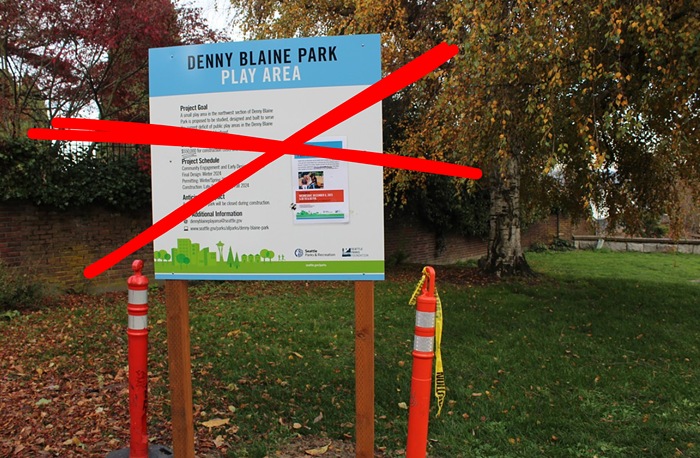Three years ago, a man stealthed Mina. He’d removed a condom during sex without telling her.
In hindsight, she considered herself lucky for having access to the reproductive health resources that many women could not afford. Still, she felt violated, and she feared unwanted pregnancy and sexually transmitted infections for weeks after the assault. When she shared her story with friends, she learned they had been stealthed, too.
Yet in the years since, Mina found few resources and no clear legal pathways for stealthing victims. On Wednesday, she told her story before lawmakers in the House Civil Rights & Judiciary Committee, urging them to support a bill that would make Washington one of a handful of states to make this form of sexual assault explicitly illegal.
“Through all of this, what I have found is that stealthing is a very specific type of sexual violence that does not neatly fit within existing definitions of sexual assault in Washington,” she told lawmakers Wednesday. “We must close the loophole on assault. This bill will create remedies for people like me who've experienced this type of assault and protect our reproductive consent.”
If passed, a person who agreed to use a condom or any other sexual barrier during sex and then secretly removed it without their partner’s consent could be subject to new penalties if the victim decided to sue them in civil court. Victims could seek compensatory damages, punitive damages, statutory damages of $5,000 per offense, or injunctive relief. They can sue under a pseudonym. The court could even make perpetrators attend and pay for counseling.
All who spoke at the hearing supported the bill.
Skylar Johnson, a University of Washington senior and vice president of the campus’ chapter of Planned Parenthood Generation Action, told lawmakers that stealthing is not something she should have to “accept as a possibility in a sexual encounter.” She said students on college campuses are especially vulnerable to nonconsensual sex, and this bill would help protect their bodily autonomy and put power back in the hands of survivors.
Although California and Maine have passed stealthing laws, attorney Elizabeth Hendren with the Sexual Violence Law Center in Seattle said HB 1958 would be the first legislation in the nation to recognize stealthing as not only removing or tampering with condoms but also other sexually protected devices, “making it more inclusive than any other state.”
During the hearing, Minority Leader Rep. Jim Walsh (R-Aberdeen) asked Hendren how a victim would establish the “intentionality” of stealthing in court. Rep. Abbarno (R-Centralia) called stealthing a serious issue but said that he’d litigated cases that came down to whether a condom broke or somebody poked a hole in it.
“Is this just, he said/she said?” Arbbano said. “Or don’t we have any proof because the proof has already been disposed of?”
Hendren explained to lawmakers that testimony is the key in a case with scant material evidence, but in our highly documented society, victims may also have text messages, or even videos, to prove that the parties agreed to use a contraceptive.
“First of all, I want to clarify that testimony is an aspect of proof,” Hendren said. “And you’re right–a lot of it does come down to ‘he said/she said,” but that is also recognized under Washington statutes as a valid form of testimony–credibility is key.”
But why take the civil route when prosecutors can already charge stealthing as rape in Washington?
Well, they don’t always do that, and that’s just one barrier to survivors seeking justice. In the criminal justice system, survivors may contend with mishandled investigations, bungled evidence, and prosecutors unwilling to pursue cases with solid proof in hand. Relatively few survivors even report the crime for fear of retribution, trauma, and the knowledge their case may not go far. The numbers bare that out: only seven rapists in one thousand ever see a jail cell, according to data from the Rape, Abuse and Incest National Network.
Even Washington, a state that’s clearing out the rape-kit backlog, passing laws to train police, and granting new rights to survivors, cannot entirely fix this prevailing criminal justice trend.
Credibility, a text message, and a strong account could take a victim further in the civil courtroom than in a criminal case, where they’d need to prove the crime beyond a reasonable doubt. Even evidence like an unwanted pregnancy or sexually transmitted disease can still happen when people use condoms properly.
Stealthing is not a new phenomenon, but researchers have only begun investigating it in recent years.
A 2024 scoping review from Kelly Cue Davis, a sexual violence researcher and professor at Arizona State University, synthesized the work in this field so far. She found only 27 studies that met her criteria with explicit data examining stealthing. She said there’s a lot we still don’t have, including any data on the men who stealth other men.
Davis learned about stealthing in the early 2010s while leading focus groups of sexually active men between the ages of 21 and 35 who have sex with women. The project was funded by the National Institutes of Health.
She and other researchers asked the men, all social drinkers who used condoms inconsistently, if other men their age rebutted women who wanted to use condoms. All said yes.
But when researchers asked how, one man suggested that guys will just pretend to use a condom, show a woman they have a condom on before taking it off, or damage it on purpose so it breaks and rolls up the shaft. Some men would carry around too-small condoms in hopes that they’d break. Another man said guys snap their underwear waistbands to imitate the sound of a condom. Other men in the room agreed–this was a thing.
“It’s all part of the game,” said one study participant.
The researchers ran six focus groups, and to their surprise the men in five of them talked about stealthing. As part of the same NIH grant, Davis collected survey data from 626 men aged 21 to 30 in Seattle in 2014. Almost 10% of participants admitted to stealthing women, and they said they did it an average of three times.
Davis also found that stealthing behaviors were associated with more aggressive sexual histories and higher rates of sexually transmitted infections and partners with unplanned pregnancies. Data from that project wrapped stealthing under the umbrella of condom use resistance but did not highlight it specifically.
At that time, academics weren’t yet calling nonconsensual condom removal “stealthing.” The term entered common use in 2017, when attorney Alexandra Brodsky published, “‘Rape-Adjacent’: Imagining Legal Responses to Nonconsensual Condom Removal,” in the Columbia Journal of Gender and Law.
Davis thought of the data she’d collected in Seattle three years prior and published her results on stealthing in the journal Society for Health Psychology in 2019. Another paper Davis published in 2019 found that 12% of the 503 women surveyed had experienced stealthing–and none had engaged in the behavior themselves. (In fact, Davis’s scoping review found only one instance of a woman stealthing a man.)
Davis said it is likely that rate could be higher because we’ve only been having this cultural conversation for five years. Many women may not know this happened to them, nor what to call it.
“It’s hard for many of them to make sense of what happened, because they consented to sex,” Davis said. “We find that people have trouble making sense of what happens in sexual assault where they know it was nonconsensual. But in these kinds of cases, it can be even more confusing.”




















